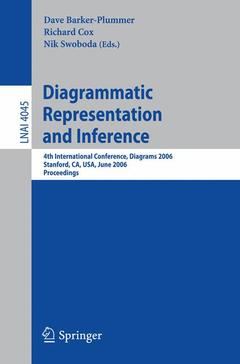Diagrammatic Representation and Inference, 2006 4th International Conference, Diagrams 2006, Stanford, CA, USA, June 28-30, 2006, Proceedings Coll. Lecture Notes in Artificial Intelligence
Coordonnateurs : Barker-Plummer Dave, Cox Richard, Swoboda Nik

Proceedings of the 4th International Conference on Theory and Application of Diagrams, Stanford, CA, USA in June 2006. 13 revised full papers, 9 revised short papers, and 12 extended abstracts are presented together with 2 keynote papers and 2 tutorial papers. The papers are organized in topical sections on diagram comprehension by humans and machines, notations: history, design and formalization, diagrams and education, reasoning with diagrams by humans and machines, and psychological issues in comprehension, production and communication.
Proceedings of the 4th International Conference on Theory and Application of Diagrams
Includes 13 revised full papers, 9 revised short papers, and 12 extended abstracts together with 2 keynote papers and 2 tutorial papers
Papers are organized in topical sections on diagram comprehension by humans
Organized in topical sections on diagram comprehension by humans and machines
Date de parution : 06-2006
Ouvrage de 304 p.
15.5x23.5 cm



